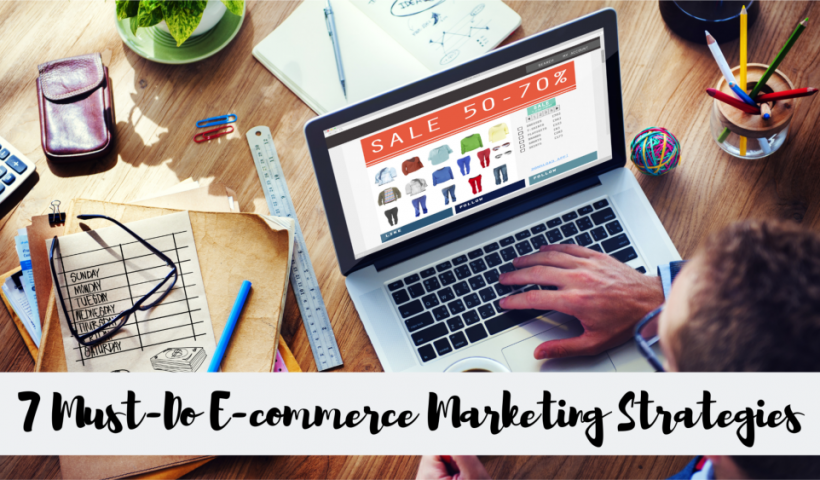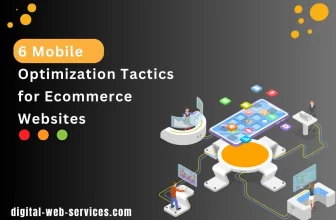
Whether you’re running a start-up or an already well-established company, it’s vital to keep up with the latest marketing trends and strategies to boost your e-commerce business. It’s considered a milestone for any brand to be able to successfully launch its own e-commerce site. However, there are necessary marketing techniques and website structuring plans have to be implemented to achieve this success. The best calculable techniques for your business, including the latest trends in eCommerce marketing strategy, should go a long way to helping you achieve your business goals.
Here Some Suggestions of eCommerce Marketing Strategy
1. Always Be Original
The initial phase in setting up an e-commerce site is content creation. You want to construct unique and one-of-a-kind content that is, at the same time, of superior quality. This draws in your target audiences and provokes or encourages them to make the decisions that you most want them to make; like filling out a form, making a purchase, starting a social media conversation about your business, or just initiating any kind of interaction with you.
Creating compelling, attractive content that best describes and markets your brand impacts how your target audiences relate to you. By putting in a little more effort and focus into your content through constantly venturing outside the box and hiring a team of experts, you are investing on how exactly and effectively your target audiences see, feel, experience, and understand you. There’s not much that can go wrong when you start things the right way!
2. Proper Content Marketing
This draws in a lot of positivity and results in conversions you could never imagine any other method can accomplish. Through the promotion of unique content, you’re ensuring that audiences receive a regular stream of new and valuable information.
There are various types of content that are sure to click with your target groups, including guest blog posts, photos, videos, graphics, and newsletters. It’s always a smart move to consult with experts, invest in state-of-the-art software, outsource work if needed, hire the right employees, and invest in training when making content for your website.
Working with the right people helps ensure that you achieve this particular goal. A diversified team can help get your website to where it needs to be. Also, never count out anyone’s ideas because they just might lead to the construction of exceptional content.
Are you familiar with Pareto’s 80-20 rule? It’s a rule that states that 80% of your content should be informative, encouraging interaction with your target audiences, while only 20% should be promotional, marketing the products and services offered by your business. Consider abiding by this rule when creating your contents.
Create content that sparks interest, is relevant to the current times, and is unlike any other.
3. SEO or Search Engine Optimization
Optimizing your e-commerce site for search engines is a must. It’s a critical move that, when done successfully, can boost your website’s visibility and draw in tons of online traffic. Boost your web ranking by settling for nothing less than world-class standards in SEO. Your website needs to have rich and relevant content that attracts users and keeps them coming back. SEMrush coupon helping you to get free SEO tools for your eCommerce website optimization, which will also best tool for your competitor site analysis.
Useful and reliable content is what your target audiences are looking for. Plus, they also don’t want to encounter error pages, so please make sure your site is optimized to be as free from error as it can possibly be. Provide visitors with detailed information about your products and services, and if necessary, put up sections on your website that further elaborate all the things that your business has to offer.
Creating content that optimizes your website would also entail proper keyword placement and usage. You’ll want your site to be among the top search results users encounter when they type in something specific on the search engine.
4. SMM or Social Media Marketing
In today’s digital age, it cannot be argued that a lot of us hang out in social media. This is why social media marketing is an incredibly powerful platform for interacting with your customers, market, and industry. It helps generate leads, boosts audience interaction, and draws traffic towards your website.
There are a variety of social media sites you can take advantage of in this day and age, including Facebook, Instagram, Snapchat, Twitter, and Tumblr just to name a few. Choose a platform that works best for your business and helps your company grow in the best possible way. When posting on social media, it’s important to stay true to your brand.
5. Create a Mobile-Adaptable Website
Your website should be able to effectively respond to a variety of user layouts. In today’s fast-paced digital world, you can expect a lot of users to be accessing your site through their mobile phones. This is why it’s important for you to accommodate the needs of every user.
Online users want ease and convenience. If they discover that landing on your website would redirect them to a web or app version of your site, then they’ll likely be put off and decide that whatever you have to offer is not worth all the trouble, seeing as you appear to not even be half concerned about your mobile-using audience’s needs. A fully-responsive, mobile-adaptable e-commerce website is what you need to build and develop.
There are mobile marketing techniques to take advantage of as well. One of the latest and most popular being geo-targeting, which enables you to connect with customers who are within a certain proximity of your company and give them an incentive to visit your physical store or make an online purchase.
6. Your Website Layout Has to Be Optimized
The first thing to do after launching your e-commerce site is to test the layout, the placement of all conversion elements, as well as the language. Your website has to be simple and easy to navigate so that visitors would feel inclined to make a purchase, fill out a form, or subscribe to a newsletter, seeing as it’s been made pretty clear to them how to accomplish those actions.
7. Visitor Interest on Your E-commerce site
There is a good chance that people who’ve shown interest in your site will make a future purchase. Through a strategy called retargeting, you will be able to track and connect with customers who’ve previously landed on your page and entice them with ads as they’re surfing the net. This is done with the intent to convince them to pay your website another visit and perhaps, even make a purchase this time around.
When it comes to e-commerce or setting up your business online, always be consistent about the message you’re sending your target audiences and the public as they will always associate that with your company. To preserve brand recognition, it’s a must to ensure that every single member is on the same page with your business’ style of communication.
Digital Web Services (DWS) is a leading IT company specializing in Software Development, Web Application Development, Website Designing, and Digital Marketing. Here are providing all kinds of services and solutions for the digital transformation of any business and website.










